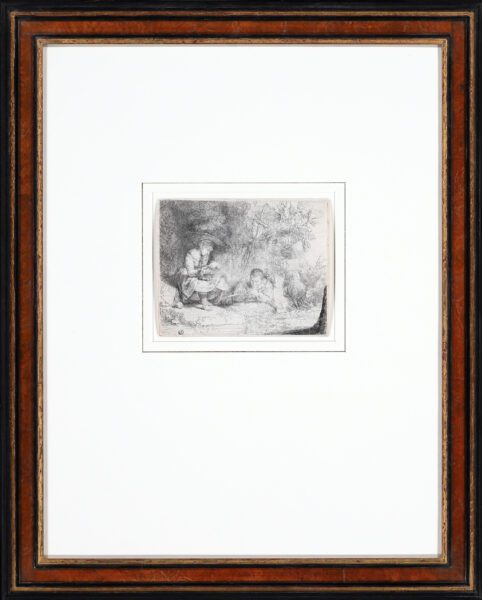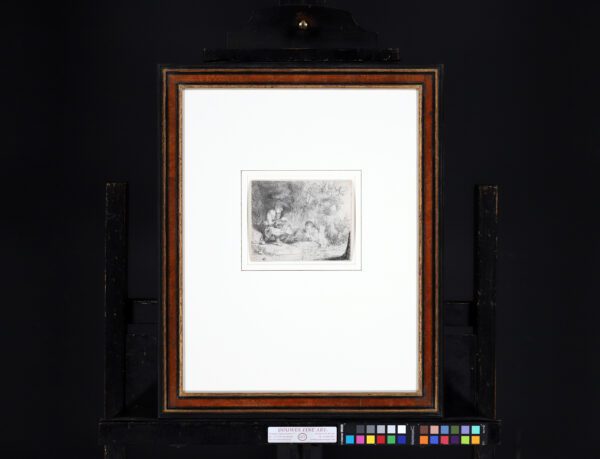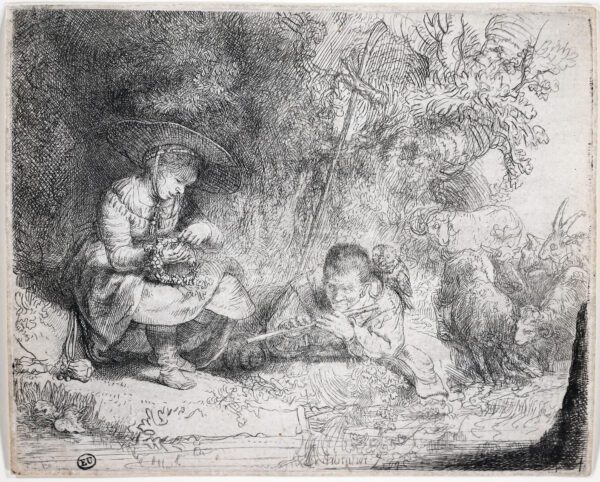“The Flute Player (Het Uilespiegeltje)”, 1642
Etching and drypoint: 11,6 x 14,3 cm
Signed and dated lower centre: Rembrandt f 1642 (the 2 in reverse)
with watermark: Five-pointed bell cap (Hinterding Aa2°) [1643]
"*" indicates required fields
Notes:
During his lifetime, Rembrandt’s extraordinary skills as a printmaker were the main source of his international fame. Unlike his oil paintings, prints travelled light and were relatively cheap. For this reason, they soon became very popular with collectors not only within, but also beyond the borders of the Netherlands.
This print was formerly called ‘het Uylenspiegeltje’ (the scoundrel), and not without reason. Rembrandt concealed all kinds of erotic double entendres in this scene of a shepherd couple beside the water. The man furtively peeks under the woman’s skirt and happens to point with his flute – a phallic symbol – in the same direction. The woman is weaving a wreath of flowers, an allusion to female genitalia.
The name of this notorious trickster was proverbial from the 16th century onwards, and used to denote someone with a wily nature. The term ‘to play Eulenspiegel’s flute’ meant to talk rubbish or to take someone for a ride. The owl on the shepherd’s shoulder makes reference to this, and acts as a symbol of the night. Ostensibly he is playing the flute (in itself a fairly unambiguous allusion), but in reality he is absorbed in less high-minded pursuits. The herd of sheep and goats to the right take advantage of his distraction and fight to get at the water.
Literature
Bartsch 188; Hind 200;
The New Hollstein Dutch 211 fourth state of IV ;
Nowell-Usticke: R+, a scarce plate Plate not in existence
Provenance:
- Collection of Edward Vernon Utterson, London (Lugt 909)
- Christie’s London, 1848
- Private collection, Germany;
- Private collection, The Netherlands;





